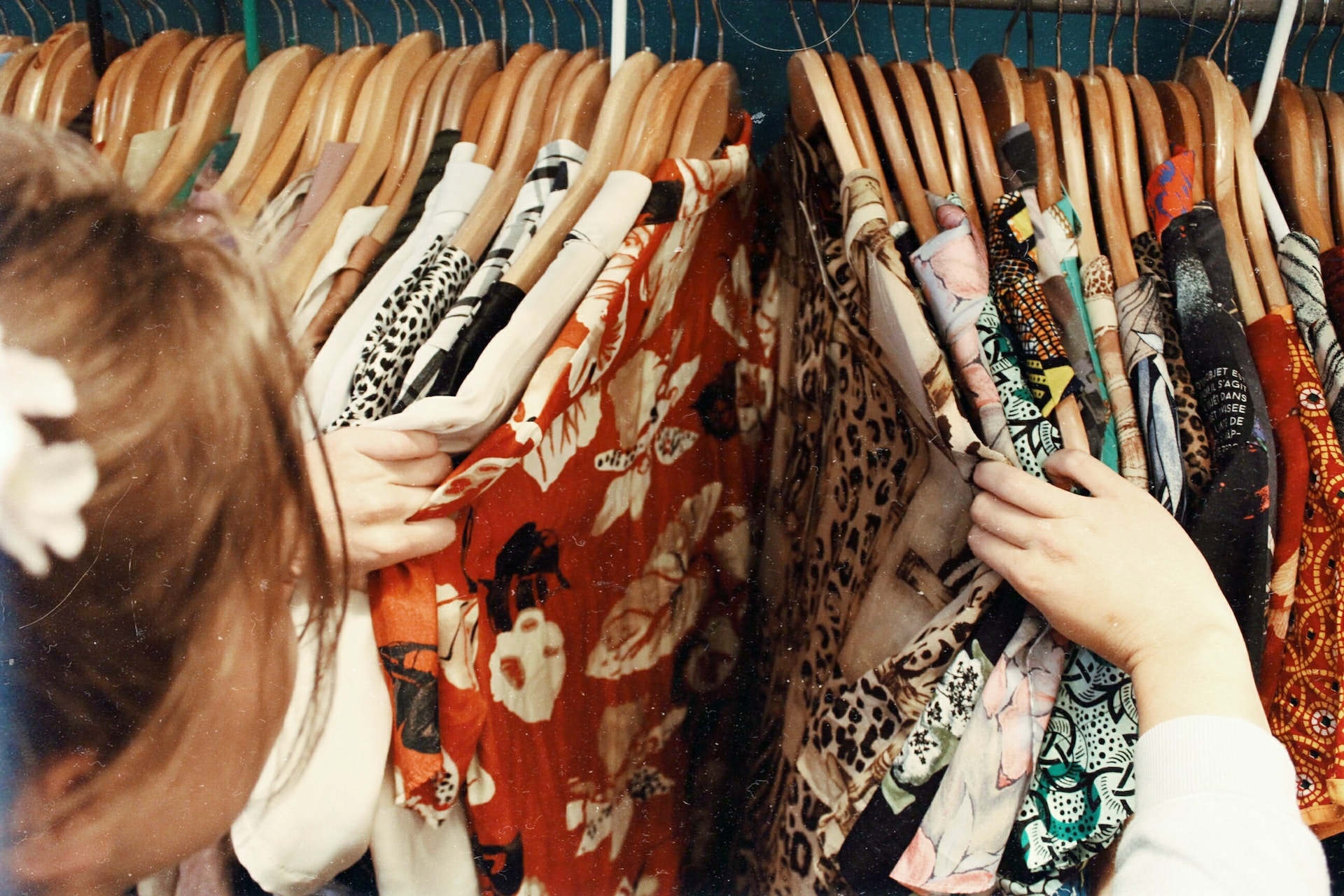Selling clothes can be a lucrative venture, whether you are a fashion enthusiast looking to clear out your closet or an entrepreneur looking to start a business. But with so many options available, it can be challenging to determine the best way to sell clothes.
Should you sell your clothes online, through social media, or via a brick-and-mortar store? What are the pros and cons of each option, and which one is the most profitable for your needs?
In this article, we’ll explore the best ways to sell clothes and help you determine which one is right for you.
Selling Clothes Online: The Pros and Cons
In recent years, online platforms have become increasingly popular as a way to sell clothes. From e-commerce websites like Amazon and eBay to social media platforms like Instagram and Facebook, there are many options available to you.

Pros of selling clothes online
Here are some of the advantages of selling clothes online:
- Convenience: One of the biggest advantages of selling clothes online is convenience. You can list your items for sale from the comfort of your own home, and buyers can browse and purchase them at their leisure.
- Wider Reach: Another advantage of selling clothes online is that you can reach a wider audience. With e-commerce websites and social media platforms, you can connect with buyers from all over the world, which can help increase your sales.
- Lower overhead costs: Selling clothes online also has lower overhead costs than a physical store. You don’t need to rent a space or hire staff, which means you can keep more of your profits.
Cons of selling clothes online
Here are some of the disadvantages of selling clothes online:
- Competition: One of the biggest drawbacks of selling clothes online is competition. With so many other sellers out there, it can be challenging to stand out and make a sale.
- Shipping and handling: Selling clothes online also requires shipping and handling, which can be time-consuming and expensive. You’ll need to package your items securely and calculate the cost of shipping, which can eat into your profits.
- Limited customer interaction: Selling clothes online also means limited customer interaction. You won’t be able to provide personalized recommendations or offer a tactile shopping experience, which can be a drawback for some buyers.
Selling Clothes in Physical Stores: Pros and Cons
Brick-and-mortar stores are a traditional way to sell clothes, but they still have their advantages.

Pros of selling clothes in stores
Here are some advantages of selling clothes in brick-and-mortar stores:
- Personalized customer experience: One of the biggest advantages of selling clothes in a physical store is that you can offer a personalized customer experience. You can interact with your customers, offer recommendations, and provide a tactile shopping experience that can help build customer loyalty.
- Immediate payment: Selling clothes in a physical store also means immediate payment. You don’t have to wait for the buyer to pay for shipping or for the payment to clear, which can be a drawback of selling clothes online.
- Brand awareness: Selling clothes in a physical store can also help build brand awareness. You can create a storefront that reflects your brand identity and attract customers who are drawn to your aesthetic.
Cons of selling clothes in stores
Here are some of the disadvantages of selling clothes in brick-and-mortar stores:
- Higher overhead costs: One of the biggest drawbacks of selling clothes in a physical store is higher overhead costs. You’ll need to rent a space, hire staff, and cover utilities and other expenses, which means you’ll need to sell more clothes to make a profit.
- Limited reach: Selling clothes in a physical store also means limited reach. You’ll only be able to attract customers who can physically come to your store, which can be a drawback if you live in a location with low foot traffic or a small local market.
- Seasonal fluctuations: Selling clothes in a physical store can also be impacted by seasonal fluctuations. For example, if you are selling winter clothing, you may experience a decrease in sales during the summer months.
What is the best way to sell clothes?
So, which is the best way to sell clothes? The best way to sell clothes depends on your individual needs and preferences.
If you are looking for convenience and want to reach a wider audience, selling clothes online may be the best option for you. However, if you are looking to offer a personalized customer experience and build brand awareness, selling clothes in a physical store may be the better choice.
Here are some factors to consider when deciding between online platforms and brick-and-mortar stores:
- Your target audience: Who is your target audience, and where do they prefer to shop? If you are selling to younger generations, they may be more likely to shop online, while older generations may prefer physical stores.
- Your budget: How much money do you have to invest in your business? Selling clothes online has lower overhead costs, but you may need to spend more money on marketing to stand out from the competition. Selling clothes in a physical store has higher overhead costs, but you may be able to attract customers through foot traffic and word of mouth.
- Your inventory: What type of clothes are you selling, and how much inventory do you have? If you have a large inventory, it may be easier to sell online, where you can reach a wider audience. If you have a smaller inventory, selling in a physical store may be more feasible.

Tips for Selling Clothes Online
If you’ve decided that selling clothes online is the best option for you, here are some tips to help you get started:
- Take high-quality photos: When listing your items for sale, make sure to take high-quality photos that accurately depict the item’s color and condition.
- Write detailed descriptions: Along with photos, provide detailed descriptions of your items, including their size, material, and any flaws or wear and tear.
- Price competitively: Do some research on other sellers to determine a competitive price for your items.
- Offer free shipping: Offering free shipping can help attract buyers and increase sales.
- Use social media: Utilize social media platforms like Instagram and Facebook to promote your items and connect with potential buyers.
Tips for Selling Clothes in a Physical Store
If you’ve decided that selling clothes in a physical store is the best option for you, here are some tips to help you get started:
- Create a cohesive brand identity: Make sure your storefront reflects your brand identity and creates a welcoming atmosphere for customers.
- Hire friendly and knowledgeable staff: Your staff can make or break the customer experience, so make sure to hire friendly and knowledgeable employees who can provide personalized recommendations and build customer loyalty.
- Host events: Hosting events like trunk shows or fashion shows can help attract customers and create buzz around your store.
- Offer a loyalty program: Offering a loyalty program can incentivize customers to return to your store and make repeat purchases.

FAQs
Q: Can I sell clothes on multiple online platforms?
Yes, you can sell your clothes on multiple online platforms, but make sure to keep track of your inventory to avoid overselling.
Q: How do I calculate shipping costs when selling clothes online?
Most e-commerce websites have built-in shipping calculators that can help you determine the cost of shipping. Alternatively, you can use a shipping calculator tool to calculate shipping costs based on the weight and dimensions of your package.
Q: Do I need to pay taxes on my sales?
Yes, if you’re selling clothes as a business, you’ll need to pay taxes on your sales. Make sure to research your local tax laws and consult with a tax professional to ensure you’re following all necessary regulations.
Q: How can I make my physical store stand out from competitors?
Offer personalized customer service, host events, and create a unique and welcoming atmosphere in your store. You can also consider offering exclusive items or services to set yourself apart from competitors.
Q: How can I increase sales on my online platform?
Offer competitive pricing, provide high-quality photos and detailed descriptions, utilize social media to promote your items, and offer incentives like free shipping or sales promotions.
Conclusion
The best way to sell clothes ultimately depends on your individual needs and preferences. Selling clothes online can offer convenience and a wider audience while selling in a physical store can offer a personalized customer experience and build brand awareness.
Whether you choose to sell clothes online or selling clothes in a physical store, make sure to do your research, price competitively, and offer high-quality products and customer service. With the right strategy and approach, you can successfully sell clothes and grow your business.

I am Adeyemi Adetilewa, an SEO Specialist helping online businesses grow through content creation and proven SEO strategies. Proficient in WordPress CMS, Technical Site Audits, Search Engine Optimization, Keyword Research, and Technical Writing (Portfolio).
I help brands share unique and impactful stories through the use of public relations, advertising, and online marketing. My work has been featured in the Huffington Post, Thrive Global, Addicted2Success, Hackernoon, The Good Men Project, and other publications.

